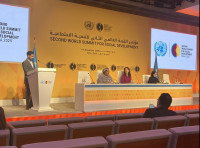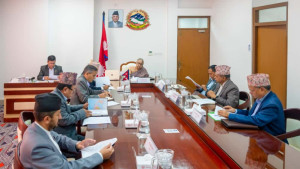Opinion
Look both ways
Traffic-violation fines should be raised further, and proper road signs should also be in place
Prakash Bom
Before the Indian independence, there were no highways and very limited road infrastructure in Nepal. Thus, there were no traffic regulations. The country’s first highway was the Tribhuvan Highway that connected the Capital, Kathmandu, with the Indian state of Bihar. Nepal now has several highways, and district and village road infrastructure in place. But their structures cause mind-boggling road congestion and casualties. Yet the government and its line ministries and departments do not seem to be bothered to improve this state of affairs and enforce strict traffic regulations that comply with international practice to save lives.
Highways and road structures in Nepal do not necessarily need to be on a par with the ones in the developed nations, as far as materials and designs are concerned. But they must be properly structured and should have necessary road signs to reduce road fatalities. For example, two-way highways and roads are divided with double yellow lines and there are specific regulations for the ‘solid-double-yellow line’ and the ‘broken-double-yellow line’. As per international practice, the ‘solid-double-yellow line’ restricts overtaking and the ‘broken-double-yellow line’ allows it.
Reckless driving
In Nepal all two-way highways and roads are separated by divided single white lines allowing vehicles to pass other vehicles anytime, anywhere and anyhow. At places, the lines are not even visible. This practice has not changed over the decades as engineers of the Department of Roads—many of whom have returned with their degrees from developed countries—do not seem to realise the fact that small changes can save many lives.
In New York, if drivers overtake a vehicle along the ‘solid-double-yellow line’, they get three points on their driving license with a minimum fine of $350. Points on the driving license increase the premium of driving insurance. In my view, if roads with proper structure and signs are constructed along with strict regulations, the roads in Nepal will become much safer and less congested.
While driving along the roads in Nepal, one sees very few road intersections with traffic lights or stop signs. Even if there are traffic lights, they may not work. The government can claim that due to a chronic shortage of electricity and regular power-cuts, having functioning traffic lights is difficult. But there should be no excuse for not having stop signs. As per international practice, every road intersection ought to have a stop sign. In the roads of Nepal, particularly in a sprawling city like Kathmandu, stop signs can help regulate traffic properly and prevent road accident. The rule about the stop sign is ‘First-come, first served (FCFS)’, meaning the vehicle that arrives first at an intersection passes it first.
Meagre penalties
Although the government decided to hike traffic fines recently, the increased penalties are still much lower than under international standard and practice. For example, as per new traffic regulations, a reckless driving under the moving violation is to be fined Rs500. In the US, reckless driving gets five points on the driving licence and a minimum fine of $350. Likewise, according to the new rules, driving under the influence of alcohol draws a fine of Rs1000 here. But as per international standard, driving under the influence of alcohol—if convicted as a first-time offender—attracts a minimum fine of $1000, one-year jail sentence and minimum one-year revocation of licence.
Perhaps it will take a century for Nepal to implement regulations in line with international standards. But meagre penalties for major traffic violations—reckless driving and driving under the influence of alcohol, which are responsible for heavy casualties—will not prevent road offences. The government should consider increasing the penalty some more so that it hurts the violators where it matters—their wallet. Besides, highways and road structures without proper signs to regulate traffic will always cause road congestion and casualties.
Bom is a freelance writer at Global Politician, an independent journal of politics and world affairs




 17.12°C Kathmandu
17.12°C Kathmandu










